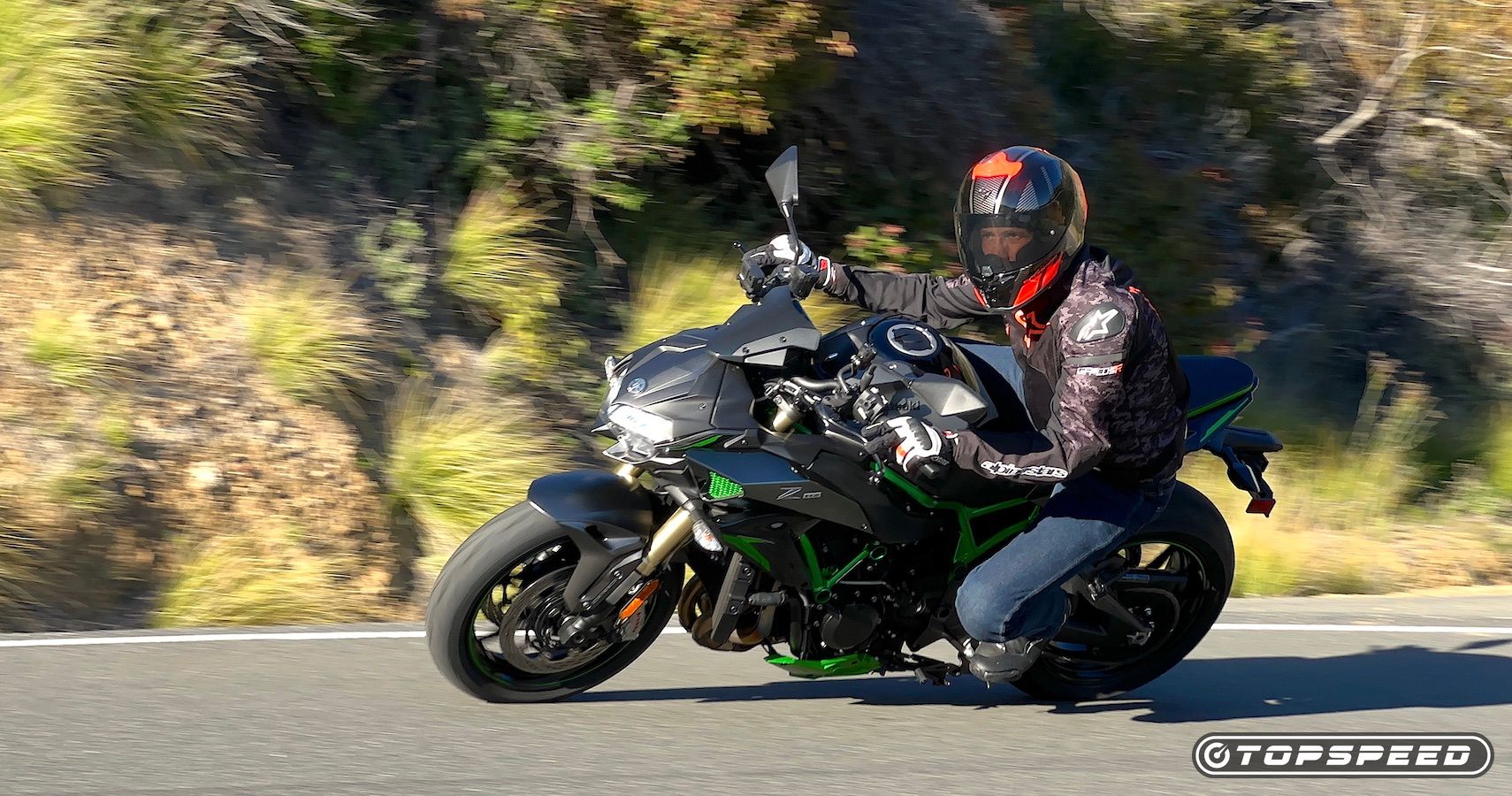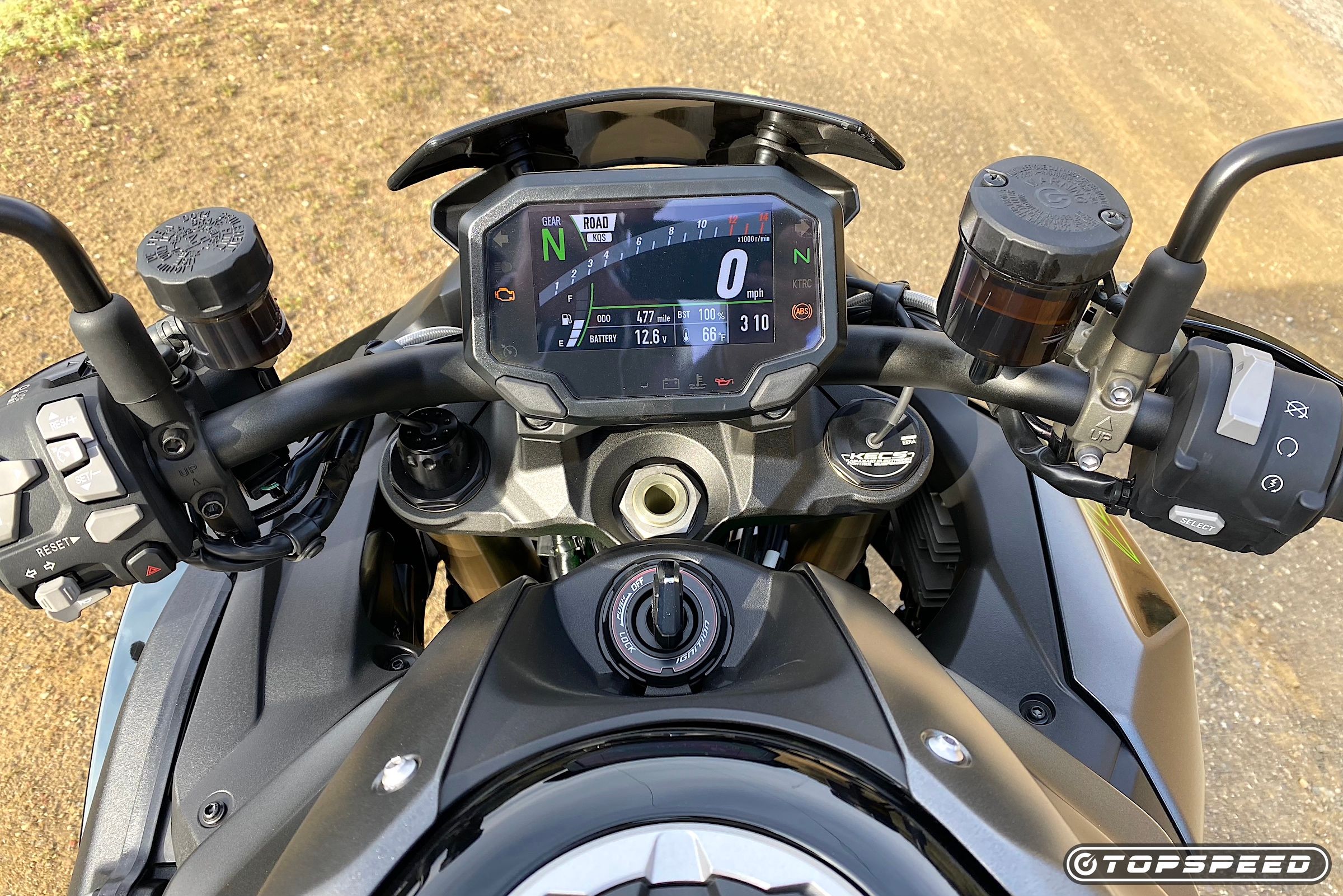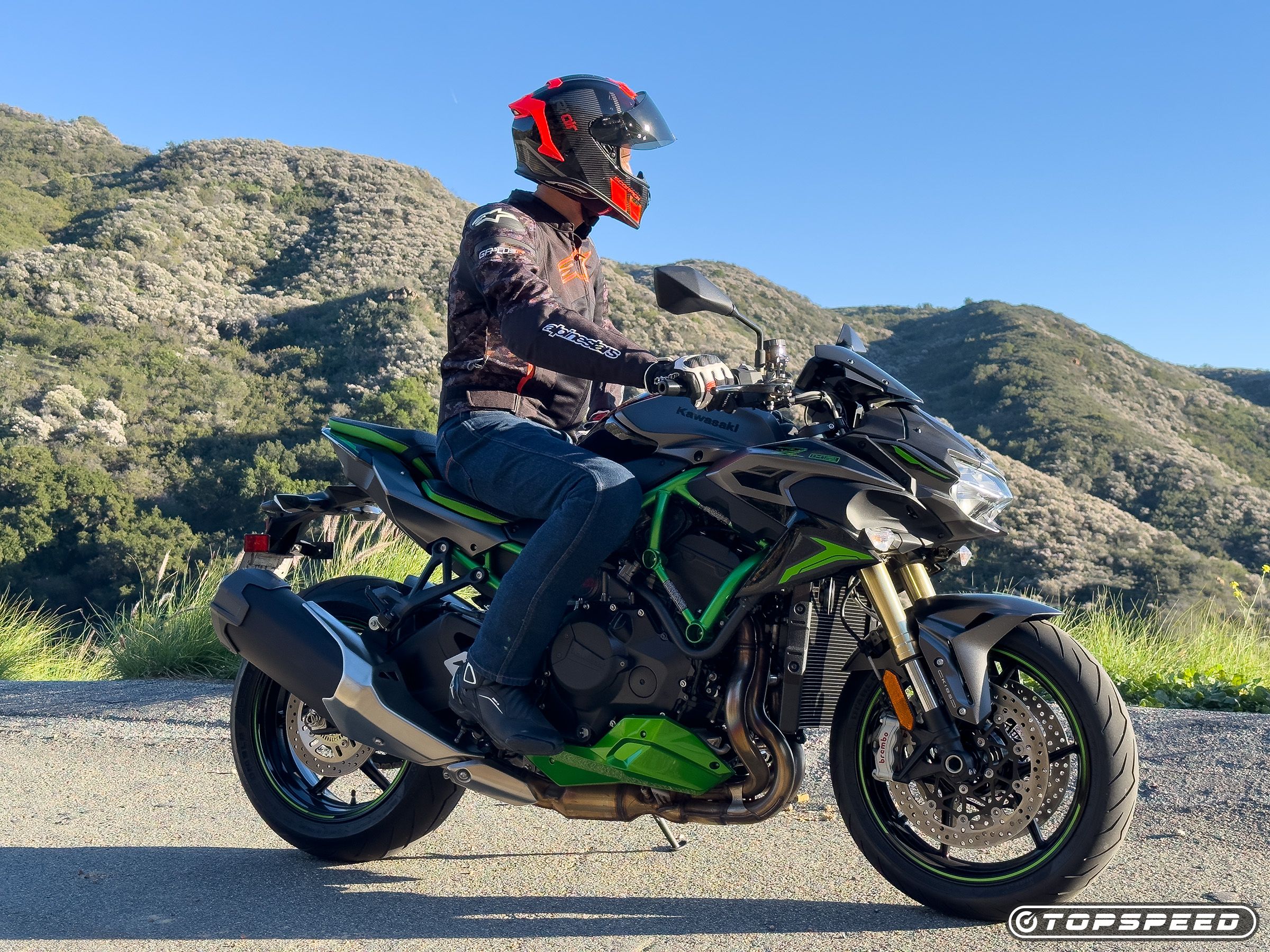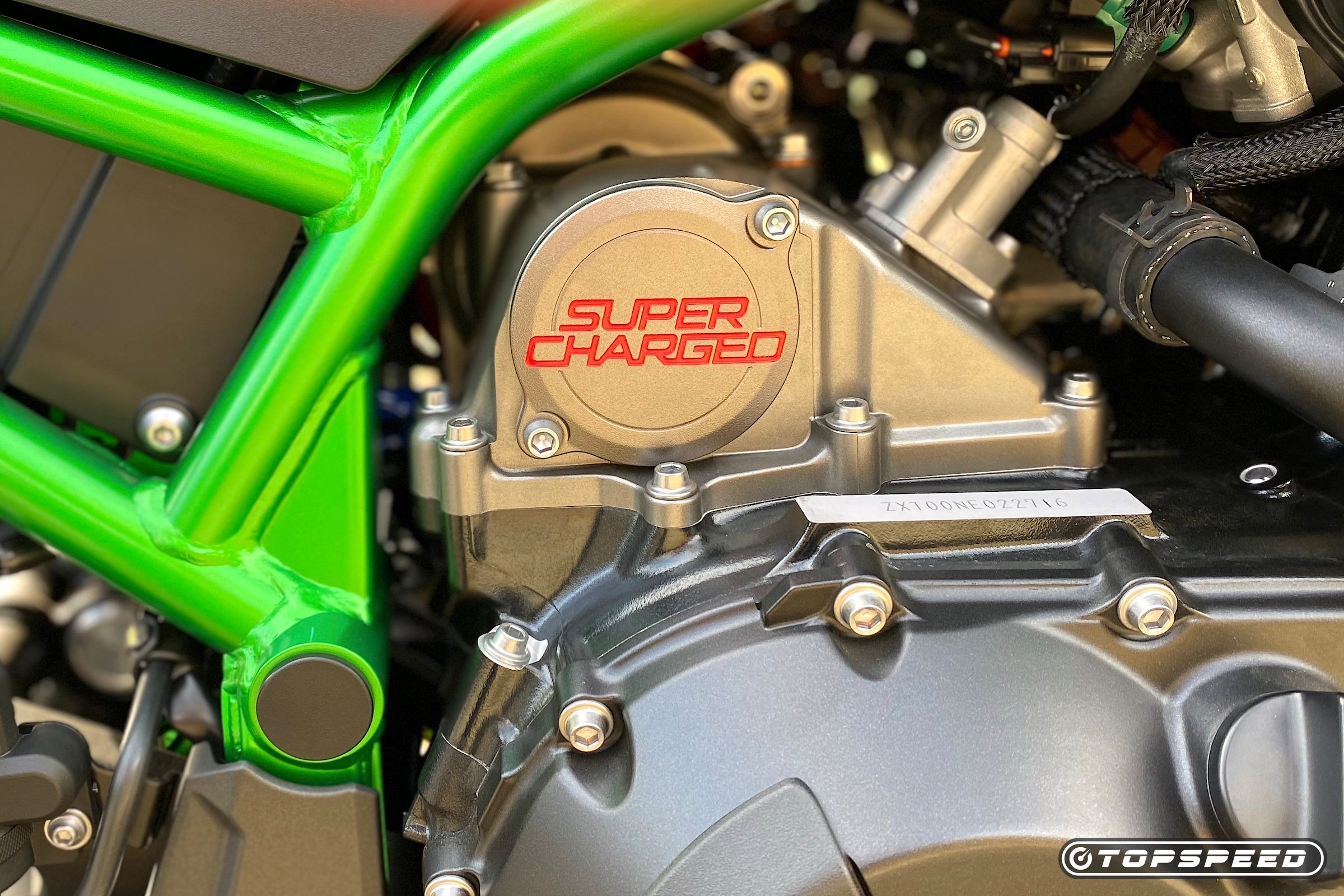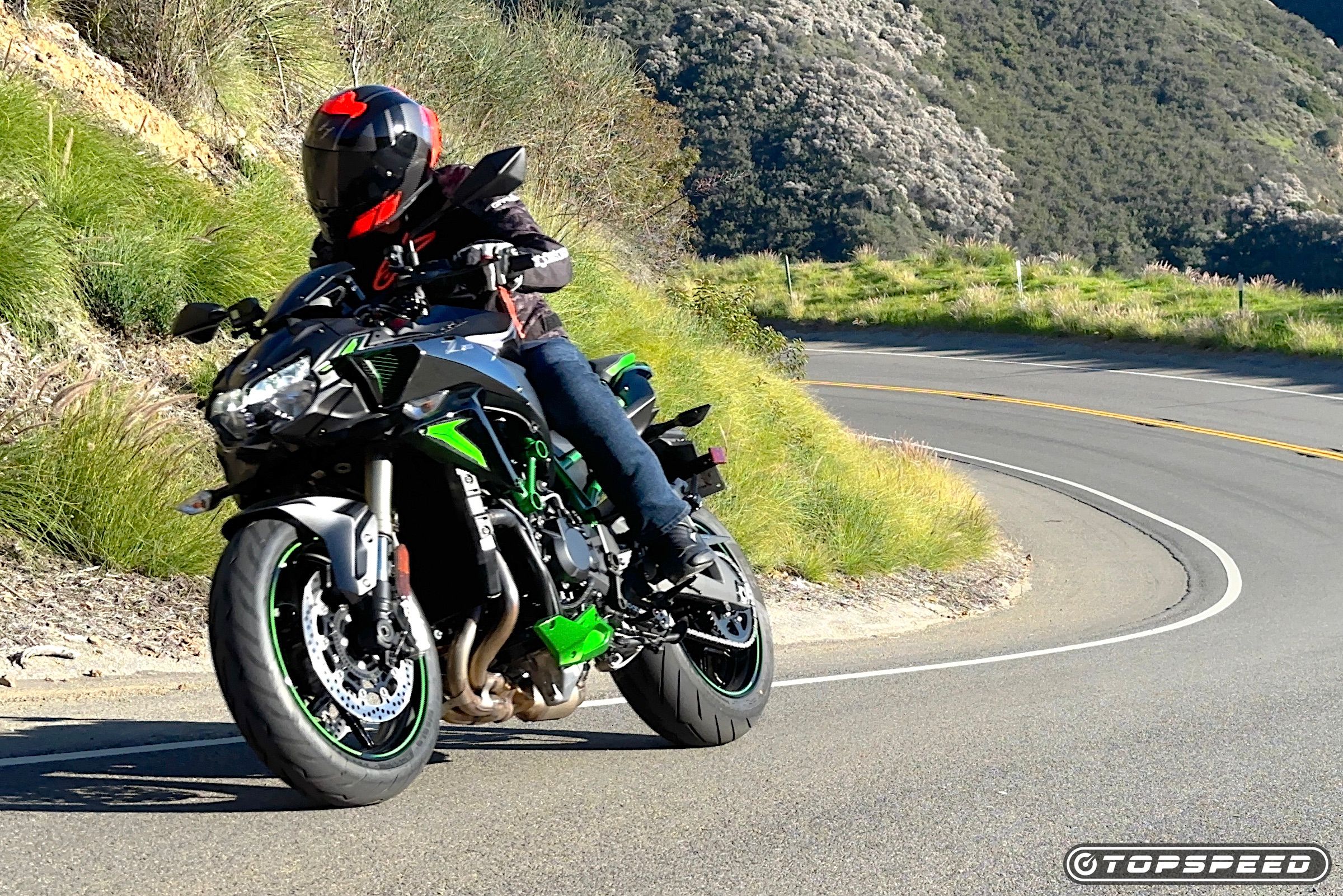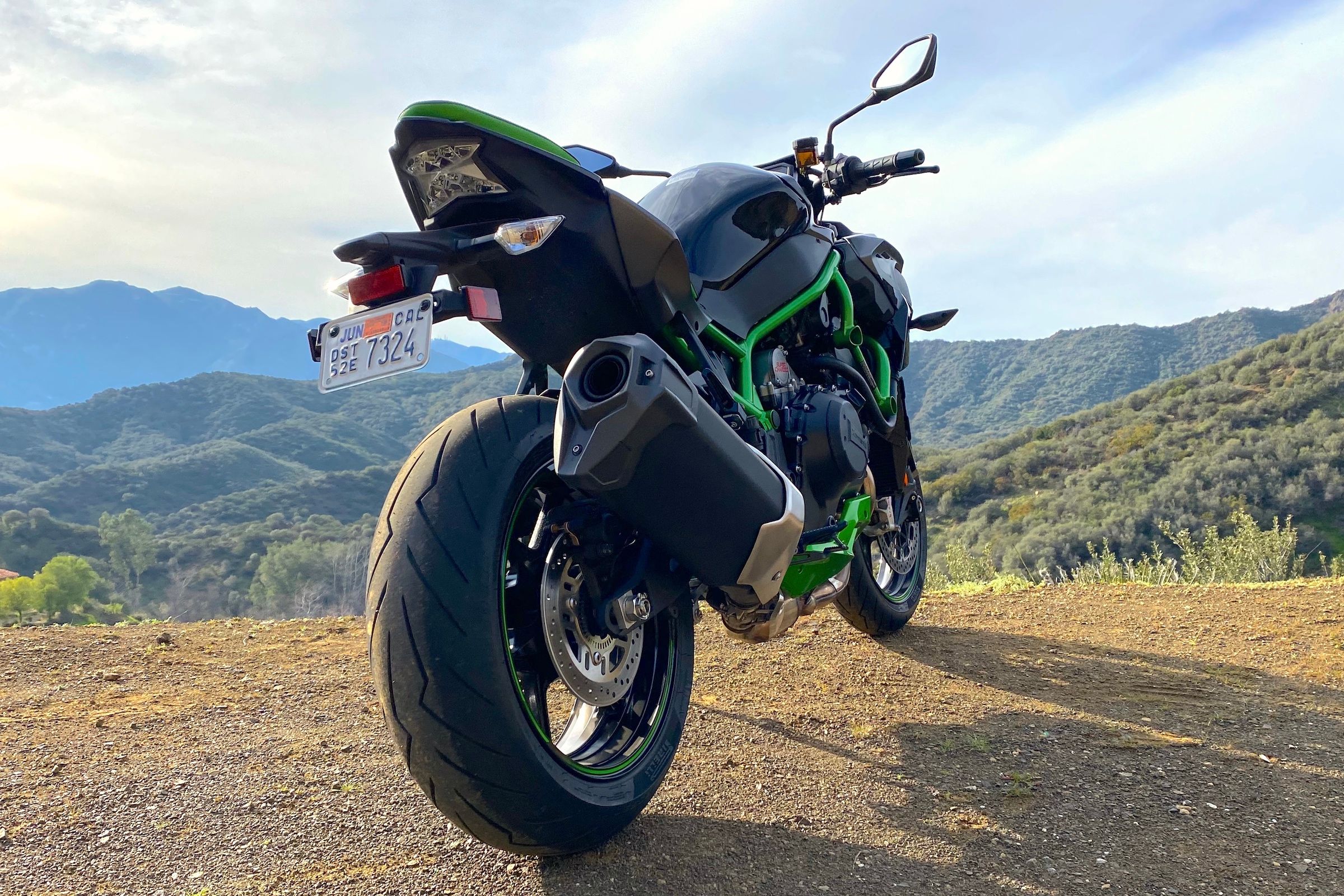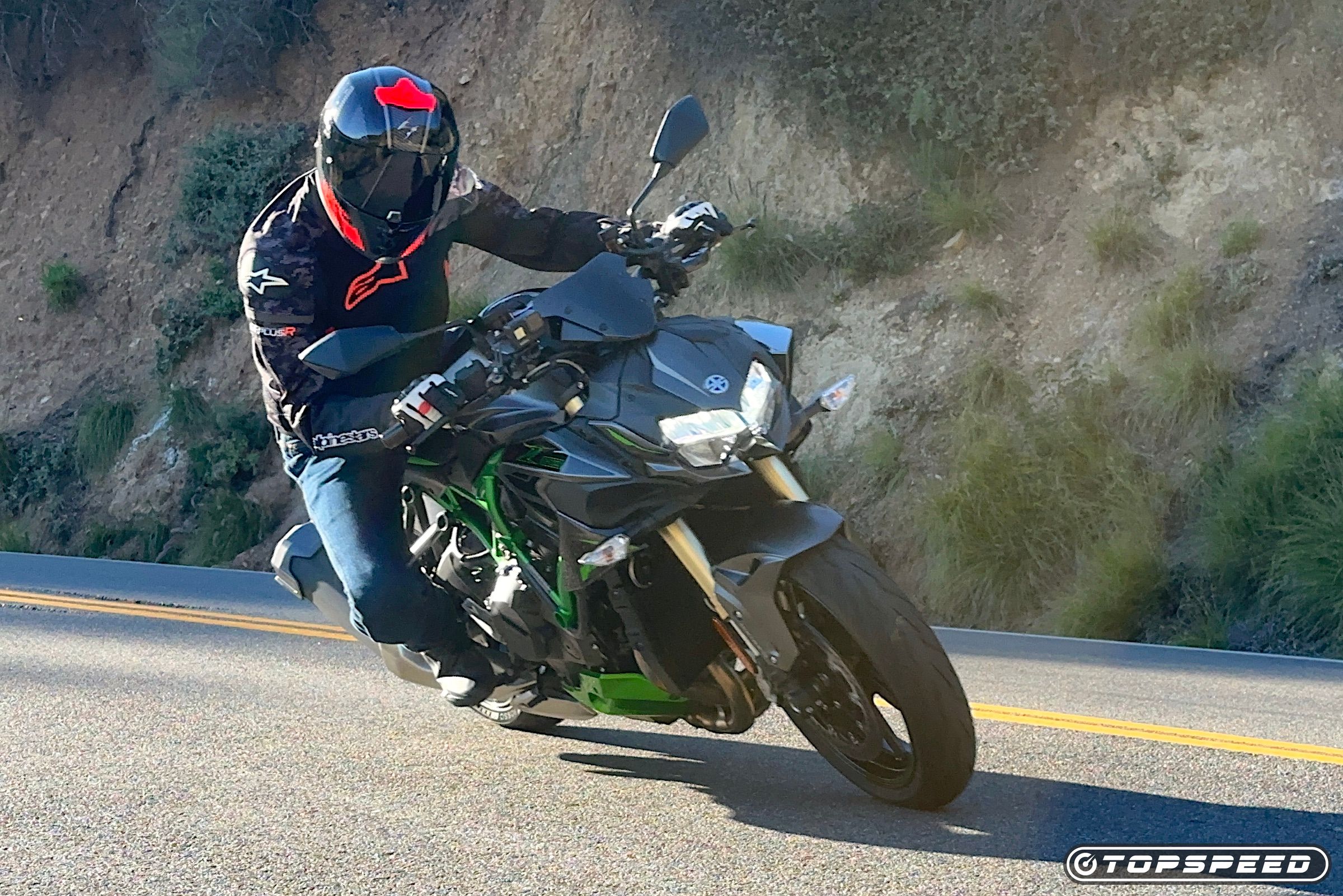A BMW Type 255 Kompressor won the Isle of Man TT in 1936, proving that supercharged motorcycles were as reliable and faster than their normally aspirated competitors. Had the killjoys at FIM not decreed a ban on forced induction from road racing after WWII, super and turbocharged motorcycles might have become the norm rather than the exception. At the time, winning races assured a manufacturer’s success at the dealerships, and the new regulations deterred further research and development on the subject. Four decades would pass before turbochargers would grasp the forced induction baton, initiating a new race.
With the introduction of the first semi-production turbocharged motorcycle in 1978, Kawasaki’s Z1R-TC led a resurgence of interest in forced induction engines. Other manufacturers soon followed suit, spawning a series of new turbocharged machines. But chronic turbo lag required clairvoyant throttle control to manage their erratic power delivery, and bulky, impractical inter-coolers ensured the turbocharged motorcycle era was short-lived. Another forty years would pass before Kawasaki finally solved the forced induction riddle, releasing its first supercharged Ninja H2 in 2015. With the H2 lineup’s continued success, it appears that this time, the blowers are here to stay.
2023 Kawasaki Z H2
- Supercharged Inline-Four
- Dog-Ring Racing Transmission
- Brembo Master Cylinder And Stylema Calipers (SE only)
- Advanced Suite Of Rider Aids And Modes
- Wireless Smartphone Connectivity
- Semi-Active Showa Fork And Monoshock (SE only)
- Model: Z H2 SE (As Tested)
- Engine:: Supercharged 4-Cylinder
- Power Output: 197 HP
- Torque: 101 LB-FT
- Transmission: 6-Speed Dog-Ring, Return Shift
- Driveline: X-Ring Sealed Chain
- MSRP: $18,500
- MSRP (As Tested): $20,700
- Unrelenting Power Meets Unprecedented Torque
- Low Centralized Mass Belies Excessive Weight
- Easy Going Ergonomics For Everyday Riding
- Supercharger Bestows Uniquely Stealthy Character
- Too Heavy For A Naked
- Thirsty When You Push The Envelope
A Supercharged Kawasaki Inline-Four Engine
Kawasaki cracked the forced air induction conundrum with its brilliantly simple, planetary drive centrifugal supercharger, developed in conjunction with its Heavy Industries’ Aerospace division. Compressing air in a forced system causes it to heat up, which reduces its oxygen content and combustibility, requiring an intercooler to reduce the air temperature before it reaches the engine.
The secret to Kawasaki’s innovative design is its exceptional thermal efficiency. The H2’s supercharger attains very high impeller speeds without requiring an intercooler, adding notable boost with minimal weight and complexity while bestowing a unique personality on the H2 lineup.
Inherited from its Ninja H2 cousin, the Z H2’s 998cc, liquid-cooled, 16-valve, inline-four engine and centrifugal blower were subject to a re-tune, which brings peak horsepower down from the Ninja’s 228 to 197, improving mid-range performance at the expense of top-end speed. For those who just sighed while lamenting the loss of 31 muscular horses, bear in mind this is a naked, with no bubble in which to hide from the wind.
Although the Z H2 relinquishes the title of most powerful to Ducati’s new Streetfighter V4 SP and is a few horses shy of the 205 produced by the 2023 BMW M 1000 R, it can still unleash more ponies than the KTM 1290 Super Duke R, Aprilia’s Tuono V4, and over 30 more than the Yamaha MT-10 SP.
The H2's Naked-Bike Sibling Packs A Mountain Of Torque
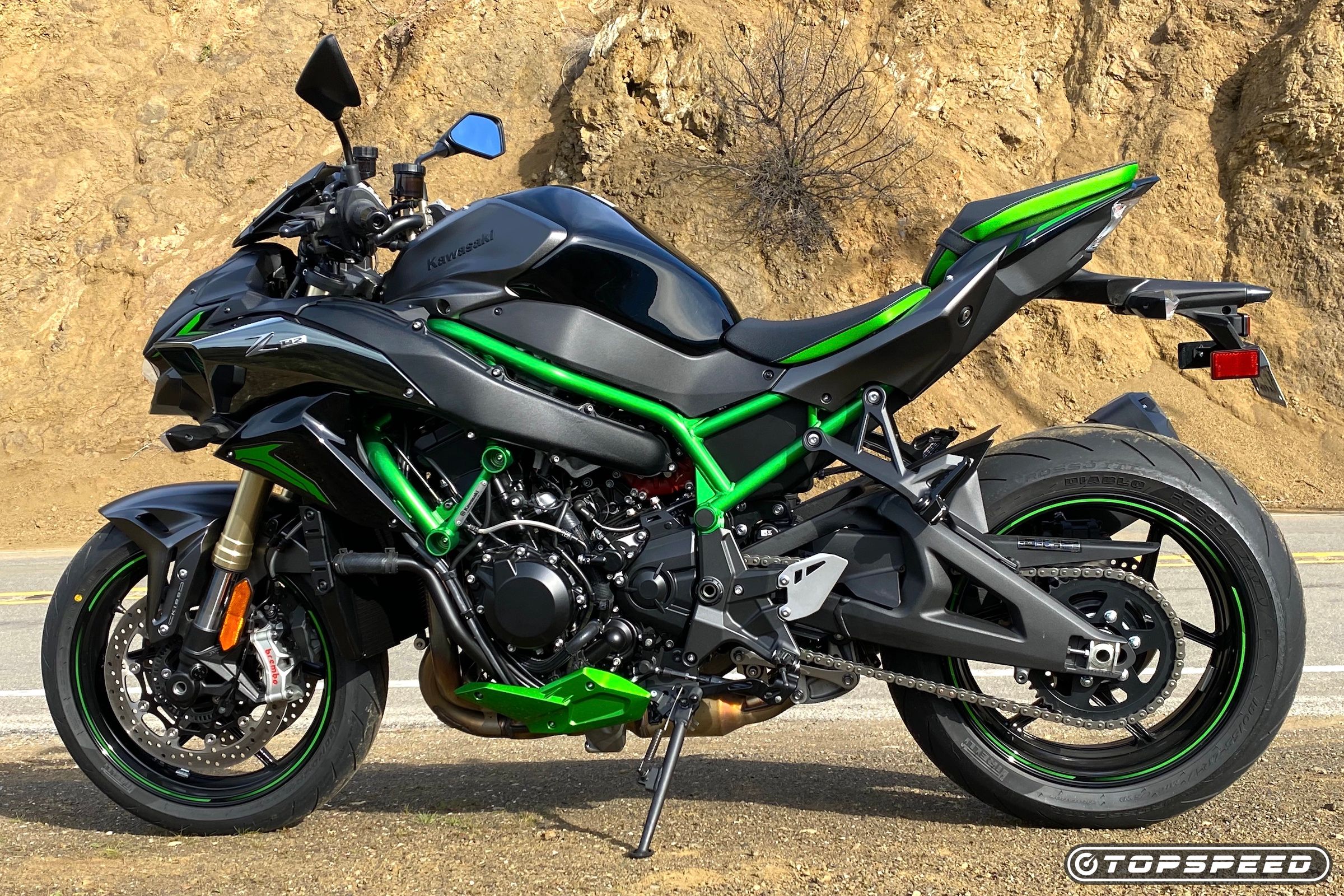

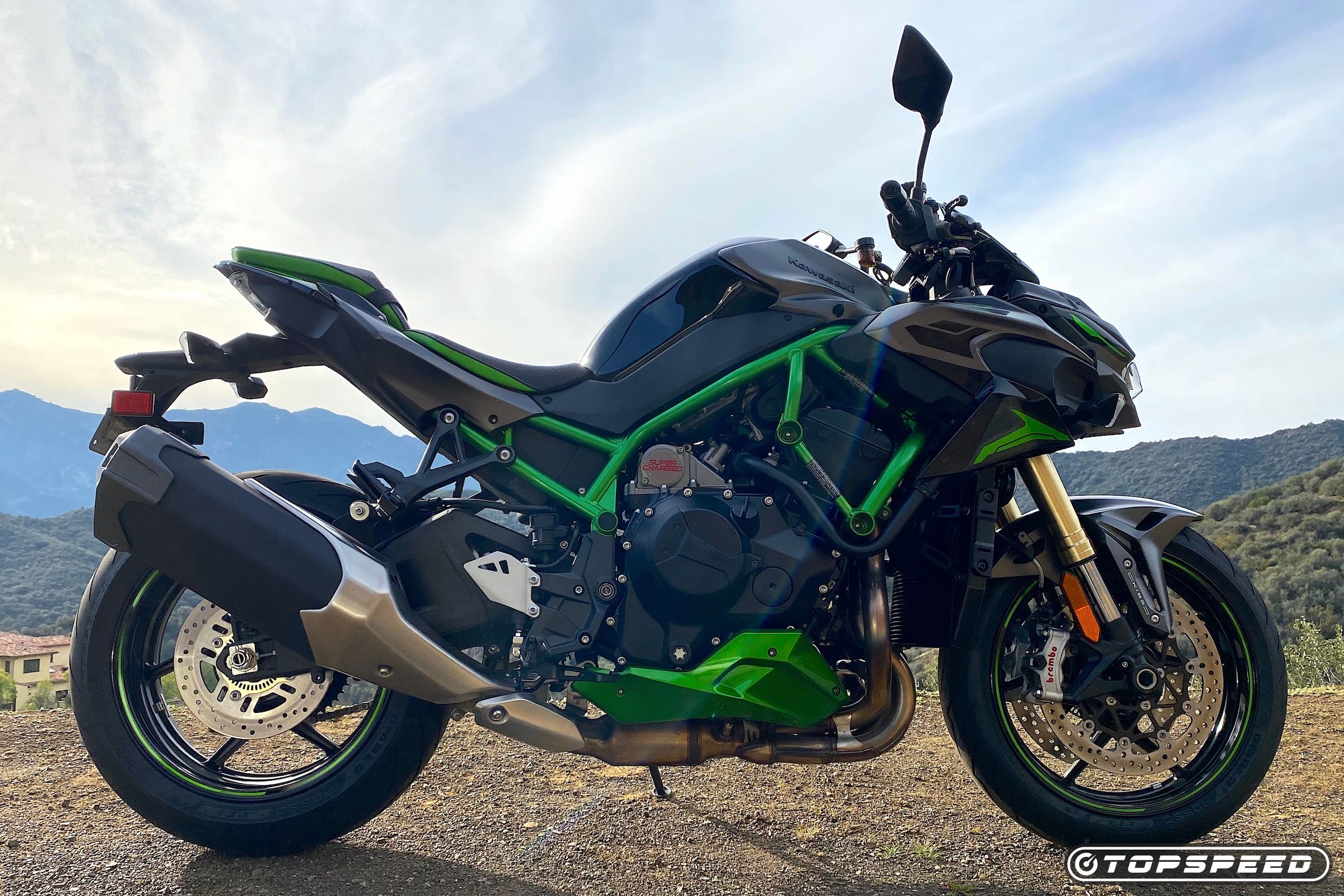
Nevertheless, the H2’s unrelenting torque band is the source of the unique feeling it bestows on its rider. At around 3,000 revs, the torque climbs steeply before holding steady like a desert mesa, all the way to 8,500, maxing out at a class-leading 101 pound-feet. The Z H2 feels poised to surge forward, regardless of which gear you’re in.
Updated cam profiles, a chamber less exhaust system, and race-bred engine components contribute to the Z H2’s incredible low-mid range performance and help improve fuel efficiency. ECU-controlled, 40mm, independent throttle bodies provide an exceptionally smooth response to inputs.
Racing Genes
Developed for the Kawasaki factory racing team, the Z H2’s dog ring transmission delivers superfast gear changes while enabling a highly compact design, helping Kawasaki centralize the Z H2’s mass, which at 529 pounds wet, is significantly heavier than its numerous rivals.
Dog rings operate without the aid of a synchromesh, but the quick-shifter (with auto-blipper) offers surprisingly smooth clutchless operation. Only when short-shifting will you notice the definitive clunk of the dog ring engaging. A slipper-clutch helps prevent rear wheel chatter, prone to accompany aggressive downshifts.
Exclusive to the model, the Z H2’s steel trellis frame has the engine as a stressed member, tilted forward to lower the bike’s center of gravity, and also houses the pivot for the lightweight cast aluminum swingarm. The job of providing suspension to the standard Z goes to a fully adjustable Showa SFF-BP fork and a Showa Uni-Trak mono-shock with a piggyback reservoir, adjustable for damping and rebound.
Taking care of braking, radial-mount Brembo M4.32 calipers and dual 320mm discs up front, with a single-pot caliper and 260mm disc at the rear. KIBS, Kawasaki’s intelligent anti-lock ABS comes as standard.
Proactive Technology
The Z H2 benefits from Kawasaki’s most advanced electronics package to date. With Bosch’s five-axis IMU and the latest evolution of its proprietary modeling software, Kawasaki says the Z’s next-generation ECU moves away from static/reactive technology into live-data-driven, active systems capable of building a real-time data map of what the bike is doing.
In addition to intelligent ABS, the H2 comes equipped with launch control, intelligent traction control, and a cornering management function that suppresses the bike’s tendency to stand up while braking mid-corner. The anti-pant-soiling system (my nomenclature, not Kawasaki's), processes live IMU data to calculate and maintain optimum hydraulic brake pressure based on the bike’s lean and pitch angles.
The impressive array of rider aids integrates with three preset rider modes, Sport, Road, and Rain, to deliver different characteristics and levels of intervention. A fourth Rider option allows for customized settings. The rider modes work in conjunction with three power settings, Full, Middle, and Low, roughly equating to 100 percent, seven percent, and 50 percent of power, respectively.
Interfacing all this information is a full-color TFT display with two presentation modes and wireless smartphone connectivity. Rounding out the standard model’s many features is electronic cruise control. For those riders looking for the ultimate in electronic wizardry, the Z H2 is also available in an SE trim.
At The Pinnacle Of Performance
Our Z H2 SE test model benefits from upgraded suspension and brakes. Kawasaki’s semi-active Electronic Control Suspension (KECS) system incorporates Showa’s Skyhook EERA electronic damping and compression software to manage the SFF-BP Fork and Uni-Trak, gas-charged monoshock. The KECS system processes IMU data to adjust compression and damping in real-time to reflect road conditions and the chosen rider mode; preload is electronically adjustable from the cockpit.
The SE version also gets a Brembo master cylinder and dual, radial-mount, four-piston Brembo Stylema calipers, clamping a pair of semi-floating 320 mm discs. Taking care of the rear, a two-piston caliper and 250mm disc.
Fast Doesn’t Cover This Kawasaki Z
The Z H2 offers comfortably relaxed ergonomics. The high wide bar is within easy reach, and although the pegs are high relative to its 32.7-inch seat height, the bend in my knee wasn’t uncomfortable, although I did struggle to find a comfortable place to put them. At six feet two inches, I’m on the tall side and found that my natural knee position extended beyond the scoops in the gas tank.
Any lingering thoughts about my knees evaporated as I got to grips with the smallest of the H2 lineup, which has a personality like no other. Kawasaki’s incredibly smooth inline-four and extraordinary supercharged powerband confer electric-like characteristics on the Z H2. Even at lower RPMs, acceleration is immediate and eerily effortless, while the mad array of sounds it omits adds to its futuristic feel.
When I found enough open road to smash through the gears, after whipping open the throttle, there followed the slightest pause as the supercharger spooled up, then an emphatic wail from the air intake accompanied gut-wrenching, vision-blurring acceleration. The intelligent traction control seamlessly laid down the power and, after a cheeky wheelie, the semi-active system planted the front wheel and maintained the H2’s attitude.
There is a tractor-beam quality to the shear forces catapulting the bike forward. Be ready to hold on tight. On the backroads, darting from corner to corner, the Z’s positive front-wheel feedback and pin-point cornering build confidence. The supercharger wails on the throttle, and while braking into the corners, it chatters and warbles like something from Jurassic Park, providing no end of grins.
Power is nothing without control. The Kawasaki Z H2 delivers awesome performance with an electronics suite designed to inspire the confidence to use it. Thanks to its softer tuning, the new Z develops endless usable grunt, for carving up the local canyons or laying down lap times at the track but can still boast more horses than most of us are skilled or brave enough to unbridle.
Regardless of trims, the Z H2’s electronics will suit a broad range of riding styles, and virtually all its systems are selectable, allowing riders to coral as many of those ponies as they see fit. It is too heavy, and its busy styling won't appeal to everyone, but the Z H2's unique character, excellent handling, advanced electronics, and solid build quality provide exceptional value for the base model’s $18,500 price tag. Nevertheless, the Showa Skyhook/KECS system fitted to the SE model we tested is well worth the extra $2,200.
The 2023 Kawasaki Z H2 has an MSRP of $18,500, and the sole color scheme is Metallic Phantom Silver and Metallic Carbon Gray with a crimson red frame and wheels. The Z H2 SE we tested comes in Metallic Matte Graphenesteel Gray and Ebony, with Kawasaki green accents, and has an MSRP of $20,700.

